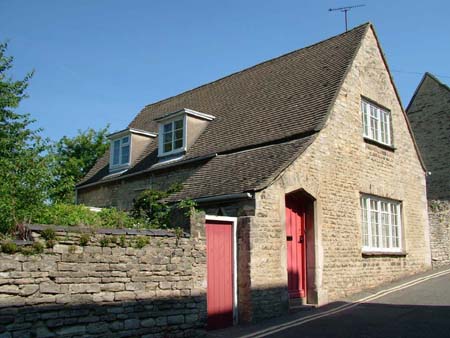

Going to schoolBefore the state education system was introduced Witney blanket workers and their families received any schooling they got from a variety of sources. Many of the blanket workers and the mill owners were Nonconformist in their religious beliefs (Methodists, Congregationalists and Quakers) and so there was a need for schools which taught principles in line with theirs. In 1833 a Factory Act was passed by Parliament that laid down a maximum 9-hour working day for children of less than 12 years of age and also stipulated that child workers were to have two hours' schooling each day. It is not clear whether this requirement was always met but there was a non-denominational National School in Witney by 1813 and a second one by the 1860s on Woodgreen. An Anglican infant school and a Wesleyan day school had also opened up in the intervening period [2]. In 1838 government inspectors visited Witney as part of a national enquiry into the life and work of handloom weavers; they reported that the weavers were very concerned about the education of their children, that it was 'more attended to in Witney than in many other towns in the region', and that it was 'carefully promoted by the manufacturers'. Many children would have learnt to read on Sundays; several of the Wesleyan and Congregationalist churches held regular Sunday school reading and writing classes and a few had lending libraries [3]. Edward Early, one of the blanket factory owners, was personally involved, undertaking the education of between 400 and 500 children each week at weekend schools, teaching writing on Saturday evenings and reading on Sundays [4]. William Smith tells us about the education he received as a boy in his memoirs. William, who was born in Witney in 1815, was later to found the blanket firm of W. Smith and Co. He was first sent to a 'Dame School' in Bridge Street where 'from fifteen to twenty children were placed for protection, and to learn the first rudiments of reading'; he also attended the Wesleyan Sunday School. He learned the 'art of making strokes' (writing) at a Saturday evening class taught by a wheelwright who had been permanently injured when New Mill caught fire in 1819. He also attended a class run by the Master of the Blue Coat School for young boys, where he made 'considerable progress and recall writing my name in small hand in 1821. I could read well for my age and soon mastered the multiplication, pence and shillings table'.When he was eight his grandfather's health failed and the family income was reduced, so William had to be content with 'the humble fare of a National School' which cost a penny a week to attend. Very soon after this he was forced to start earning some money himself by quill winding: he wrote that he was 'now left entirely to my own resources for education'. He finished his 'imperfect education' at a night school being taught by Robert Whitlock, an ex-prizefighter [5]. Early's was certainly one of the firms who encouraged their employees to attend classes in their leisure time. These were organised in collaboration with Witney Technical Schools: sewing and dressmaking, physics, drawing, woodwork, cookery and singing were all on offer in 1908. A class on 'Model gardens' was instructed by Mr H. Rhymes at Farmers Close, where each boy cultivated a plot and paid sixpence a month for instruction, land, seeds and the use of tools. A prize was given to the best one. A note on the syllabus leaflet from Charles Early and Co. reads 'We hope the classes will be largely attended by those for whom they are arranged'. Vocational courses in the Witney industry began to appear in the 1960s. Some were held at West Oxfordshire Technical College partly organised by The Wool Industries Training Board [6]. Day release schemes and more structured in-house training within the blanket companies also became more common ways to learn a trade.
|
|
| References [1] Townley 2004: p158 [2] Townley 2004: p155 [3] Townley 2004: p159 [4] Plummer and Early 1969: p83 [5] Smith unpub.: p2-3 [6] Plummer and Early 1969: p 169-171 |
|

